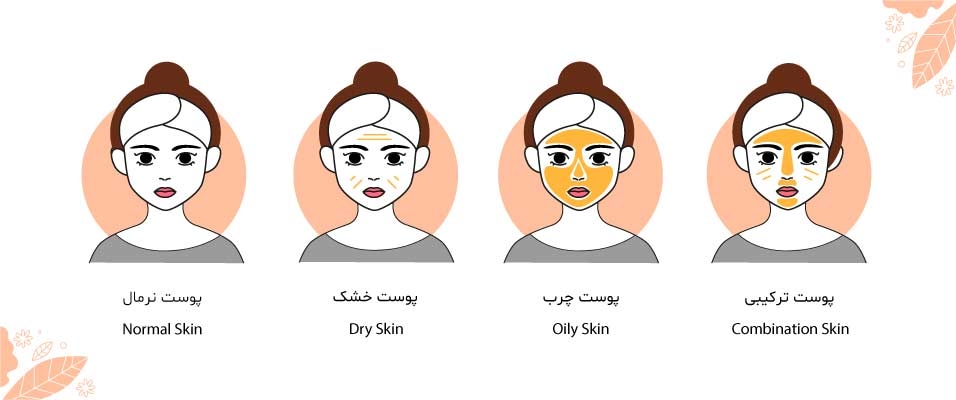آیا پوست خود را می شناسید؟ ما به شما کمک میکنیم تا مناسب ترین محصولات را برای مراقبت تخصصی از پوست، مو، دهان و دندان خود بیابید | جزئیات بیشتر
آیا پوست خود را می شناسید؟ ما به شما کمک میکنیم تا مناسب ترین محصولات را برای مراقبت تخصصی از پوست، مو، دهان و دندان خود بیابید | جزئیات بیشتر

نوع پوست توسط ژنتیک تعیین می شود، اما وضعیت پوست ما می تواند با توجه به عوامل مختلف داخلی و خارجی که تحت تاثیر آن قرار دارد، بسیار متفاوت باشد.
چهار نوع اساسی پوست سالم وجود دارد:
پوست طبیعی:
پوست طبیعی یا معمولی 'Normal' اصطلاحی است که بطور گسترده، برای اشاره به پوست متعادل استفاده می شود. منطقه T (پیشانی، چانه و بینی) ممکن است کمی چرب باشد، اما چربی پوست و رطوبت، کاملا متعادل است و پوست نه بیش از حد چرب و نه خیلی خشک است.
پوست طبیعی با ویژگی های زیر، شناخته می شود:
هر چند یک فرد دارای پوست سالم، در اثر تغیرات سن و سال، ممکن است دچار خشکی پوست یا پوست خشک شود.
پوست خشک
عبارت "خشک" برای توصیف نوع پوستی است که سبوم کمتری نسبت به پوست طبیعی تولید می کند. در نتیجه فقدان سبوم، پوست فاقد ليپيدهای ضروری است که برای حفظ رطوبت در مقابل تاثیرات عوامل خارجی، به آنها نياز دارد. این عملکرد منجر به اختلال در کارکرد طبیعی پوست می شود. پوست خشک با شدت متفاوت و در اشکال مختلف وجود دارد که همیشه به وضوح قابل تشخیص نیست.
پوست خشک با ویژگی های زیر، شناخته می شود:
پوست خشک می تواند چروکیده، خشن و زمخت باشد.
پوست چرب:
عبارت "چرب" برای توصیف یک نوع پوست با تولید زیاد سبوم استفاده می شود. تولید بیش از حد سبوم، به عنوان سبوره شناخته می شود. تعداد زیادی از عوامل، منجر به تولید بیش از حد سبوم می شود: ژنتیک، تغییرات هورمونی و عدم تعادل در میزان تولید آنها، داروهای مختلف، استرس و لوازم آرایشی comedogenic (محصولات آرایش که باعث تحریک ایجاد کومدون می شوند).
پوست چرب، تمایل بیشتری به بروز آکنه و لک دارد.
پوست چرب با ویژگی های زیر، شناخته می شود:
پوست ترکیبی:
در پوست ترکیبی یا مختلط، پوست منطقه T می تواند به طور قابل توجهی ، با بقیه ی بخش های پوست صورت، متفاوت باشد.
پوست ترکیبی با ویژگی های زیر، شناخته می شود:
در پوست ترکیبی، قسمت هایی از پوست، دارای تولید بیش از حد سبوم است. قسمت های خشک تر پوست، به دلیل کمبود چربی و کمبود لیپیدهای ساختاری در اپیدرم، توانایی مناسبی برای حفظ رطوبت ندارند.
این متن توضیحی، فقط به درک بهتر انواع پوست و شرایط آن، می پردازد و اگر شما برای شناسایی نوع پوست خود به کمک نیاز دارید، آزمایش پوست ممکن است یک ابزار مفید باشد. در هر حال، توصیه می شود که برای شناسایی بهتر پوست خود، با متخصص پوست، دکتر داروساز یا مشاوران ما در ارتباط باشید.
